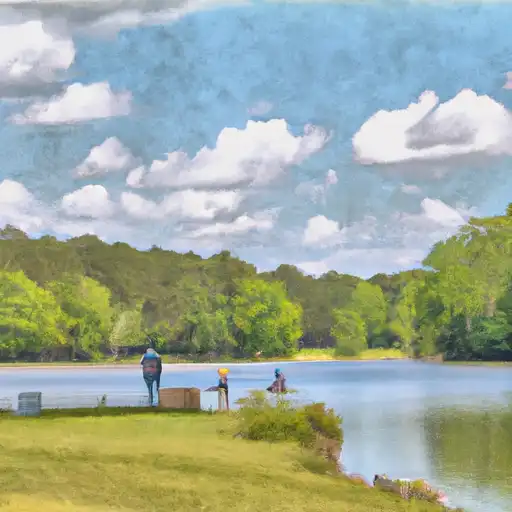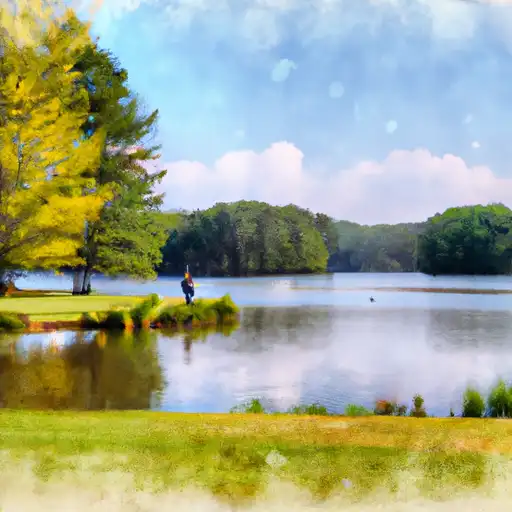Weymouth Woods
Rate this placeLast Updated: January 7, 2026
Weymouth Woods is a state nature preserve located in Southern Pines, North Carolina.
°F
°F
mph
Wind
%
Humidity
Summary
This beautiful area offers visitors a unique opportunity to explore and discover the diverse natural heritage of the Sandhills region. Here is a summary of the park, including its main attractions, interesting facts, and the best time of year to visit.
Reasons to Visit:
1. Unique Ecosystem: Weymouth Woods is home to one of the last remaining old-growth longleaf pine forests in North Carolina. This ecosystem supports a wide array of plant and animal species, some of which are rare and endangered.
2. Nature Trails: The park features several well-maintained trails that allow visitors to explore the diverse habitats, including longleaf pine forests, wetlands, and sandhills. These trails cater to different skill levels and offer opportunities for hiking, jogging, birdwatching, and nature photography.
3. Biodiversity: With over 400 species of plants, including several rare and endemic species, Weymouth Woods offers a rich and diverse botanical experience.
4. Educational Opportunities: The park has a nature center that provides educational exhibits and programs to learn about the unique flora, fauna, and cultural history of the Sandhills region. Guided tours and interpretive displays are available to enhance visitors' understanding of the area's natural and cultural significance.
Points of Interest:
1. The Boyd Tract: This area within the park is home to the oldest longleaf pine in North Carolina, estimated to be over 460 years old.
2. The Weymouth Big Woods: Known as one of the best-preserved examples of a longleaf pine forest, this area showcases the unique fire-dependent ecosystem and its associated plant and animal species.
3. The Paint Hill: A short hike leads to this scenic overlook, offering panoramic views of the surrounding Sandhills landscape.
Interesting Facts:
1. Preserving the Longleaf Ecosystem: Weymouth Woods is part of a larger effort to conserve and restore the longleaf pine ecosystem, which was once dominant in the Southeastern United States but has been significantly reduced due to human activities.
2. Endangered Species: The park is an important haven for several rare and endangered species, including the red-cockaded woodpecker and the bog turtle.
3. Historical Significance: The land where the park is located was previously owned by the Boyd family, who played a vital role in the conservation efforts and preservation of the longleaf pine forests.
Best Time to Visit:
The best time to visit Weymouth Woods is during the spring and fall seasons when the weather is mild and pleasant. Springtime offers blooming wildflowers and vibrant greenery, while fall showcases beautiful foliage colors. Summers can be hot and humid, making early morning or late afternoon visits more comfortable. Winter visits provide a unique opportunity to experience the tranquility of the park and observe migratory bird species.
Sources:
- North Carolina State Parks: Weymouth Woods-Sandhills Nature Preserve
- Visit NC: Weymouth Woods-Sandhills Nature Preserve
- The Nature Conservancy: Weymouth Woods Sandhills Nature Preserve
Weather Forecast
Park & Land Designation Reference
Large protected natural areas managed by the federal government to preserve significant landscapes, ecosystems, and cultural resources; recreation is allowed but conservation is the priority.
State Park
Public natural or recreational areas managed by a state government, typically smaller than national parks and focused on regional natural features, recreation, and education.
Local Park
Community-level parks managed by cities or counties, emphasizing recreation, playgrounds, sports, and green space close to populated areas.
Wilderness Area
The highest level of land protection in the U.S.; designated areas where nature is left essentially untouched, with no roads, structures, or motorized access permitted.
National Recreation Area
Areas set aside primarily for outdoor recreation (boating, hiking, fishing), often around reservoirs, rivers, or scenic landscapes; may allow more development.
National Conservation Area (BLM)
BLM-managed areas with special ecological, cultural, or scientific value; more protection than typical BLM land but less strict than Wilderness Areas.
State Forest
State-managed forests focused on habitat, watershed, recreation, and sustainable timber harvest.
National Forest
Federally managed lands focused on multiple use—recreation, wildlife habitat, watershed protection, and resource extraction (like timber)—unlike the stricter protections of national parks.
Wilderness
A protected area set aside to conserve specific resources—such as wildlife, habitats, or scientific features—with regulations varying widely depending on the managing agency and purpose.
Bureau of Land Management (BLM) Land
Vast federal lands managed for mixed use—recreation, grazing, mining, conservation—with fewer restrictions than national parks or forests.
Related References

 Deland Park
Deland Park
 Sandhills Horticultural Gardens
Sandhills Horticultural Gardens
 Rassie Wicker Park
Rassie Wicker Park
 Big Branch
Big Branch
 Broadacres Lakes
Broadacres Lakes
 Broadacres Lake
Broadacres Lake